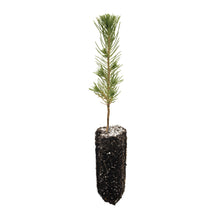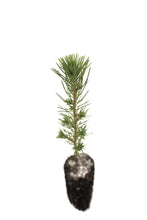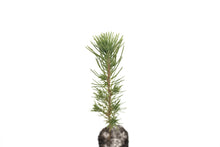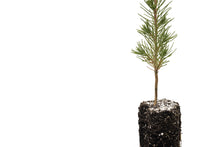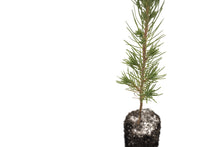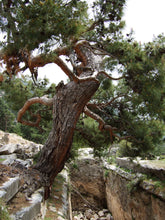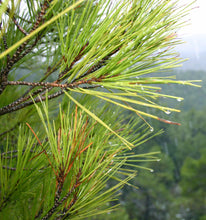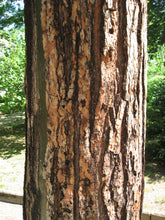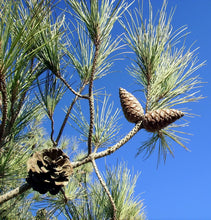
Pinus eldarica
-
Grow your own Afghan Pine, a drought and heat tolerant species from the Middle East and a popular landscape tree in the American Southwest!
- 100% guaranteed
- Seed-grown on California's Redwood Coast
- Transplanting and care instructions included
 |
Moisture Low |
 |
Cold Hardiness -10°F |
 |
Light Full Sun |
 |
Size 30 – 40' tall / 25 – 30' spread |
 |
Lifespan 200 yrs |
 |
Growth Rate Fast Growing |
 |
Drought Tolerance High |
 |
Wind Resistance High |
About Afghan Pine
From the U.S. Forest Service:
"Growing rapidly when young, Afghan Pine reaches heights of 30 to 40 feet and is quite dense. This tree stands out among the pines due to the upright growth habit that stays with the tree throughout its life. The paired, medium green needles are five to 6.5 inches long and joined by three inch-long cones. The tree is most often grown in parts of Texas.
The dense habit would make it well suited as a fine-textured screen. It is often used as a specimen, planted in groups or by itself in an open lawn area. Afghan Pine should be grown in full sun on any well-drained soil and thrives in desert-like conditions. It also grows well in alkaline or clay soil."
About Jonsteen's Seedlings
All of our trees are seed-grown at our nursery on California's Redwood Coast, which is inspected monthly and licensed by the California Department of Agriculture. Trees can provide a natural barrier against high winds, temperatures, noise pollution and soil erosion, all while benefiting local air quality, wildlife and property values — a Jonsteen seedling will only grow in value and beauty!
About Jonsteen's 100% Guarantee
All of our trees are guaranteed to arrive healthy and in good condition. If your tree perishes despite your honest efforts, we will be happy to replace it with a small-sized seedling for just the cost of shipping/handling. You can learn more about our guarantee and tree replacement policy here.
Seedling Size Chart: Medium
Due to the dynamic nature of actively growing trees, as well as the tremendous variation between species’ growth rates, we rely on the cubic volume of a seedling’s root mass to determine its “size” (Small / Medium / Large / XL). Within each size there is minor variance — the dimensions provided here represent the category minimum. If exact measurements are essential, please contact us about current stock.












